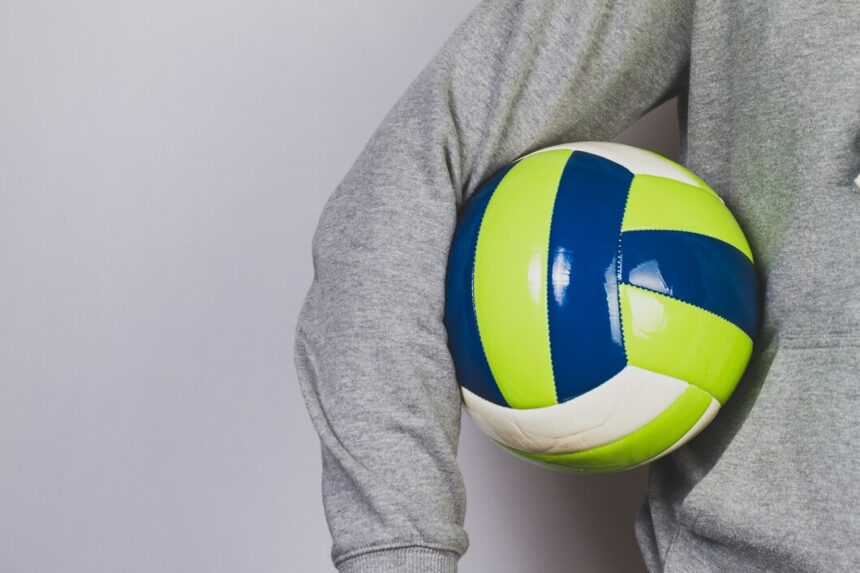Let’s dive into the exciting world of volleyball. Ever wondered why volleyball is such a universally loved sport? Well, it’s simple. Volleyball combines athleticism, strategy, and teamwork, all while being incredibly fun to play. Whether you’re on the beach, in a gym, or just in your backyard, volleyball has a way of bringing people together. Ready to jump in? Let’s get started with everything you need to know about volleyball!
What is Volleyball?
At its core, volleyball is a team sport where two teams, typically of six players each, compete to score points by grounding a ball on the opponent’s court under organized rules. The key objective is simple: keep the ball off the ground on your side and send it back over the net. It’s like a battle where both sides use skill, agility, and precision to outsmart their opponents.
History of Volleyball
Volleyball wasn’t always the high-energy game we know today. It was invented in 1895 by William G. Morgan as a blend of basketball, baseball, tennis, and handball. His goal? Create a less strenuous alternative to basketball for older members of the YMCA. Over the years, it evolved into a competitive and international sport with Olympic recognition.
How Volleyball is Played
Volleyball follows a relatively straightforward set of rules. The game is played by two teams separated by a net. Players try to hit the ball over the net using their hands, aiming to make it land in the opponent’s court. If the ball touches the ground, the opposing team scores. The game is played in sets, and the first team to win three sets out of five is the match victor.
- Scoring: Teams score by successfully grounding the ball in the other team’s court or when the opposing team commits an error.
- Rotations: Every time a team gains the serve, they rotate clockwise to ensure every player serves.
Equipment Needed to Play Volleyball
You can’t play volleyball without the right gear! Here’s what you need:
- Volleyball: The star of the show! A lightweight, yet durable ball with a circumference of around 65-67 cm.
- Net: The net divides the court and sits at 2.43 meters high for men and 2.24 meters for women.
- Court: A regulation volleyball court is 18 meters long and 9 meters wide.
- Knee Pads: Protect your knees from hard dives and scrapes.
- Shoes: Lightweight, grip-enhancing shoes that allow for quick movements on the court.
6. The Importance of the Volleyball in the Game
The volleyball itself is the cornerstone of the game. Imagine playing soccer without a soccer ball—pointless, right? The ball’s unique design allows for high-speed rallies, powerful serves, and perfectly timed spikes. Without it, there simply wouldn’t be a game.
Understanding Volleyball Positions
Teamwork makes the dream work in volleyball. Here’s a breakdown of the main positions:
- Setter: The “quarterback” of the team, responsible for setting the ball up for attackers.
- Outside Hitter: This player takes on the responsibility of spiking the ball from the front and back row.
- Middle Blocker: Specializes in blocking and quick attacks.
- Libero: Defensive specialist, typically the best passer on the team.
- Opposite: Positioned opposite the setter and tasked with attacking.
Types of Volleyball Games
There are several different formats of volleyball, each with its unique rules and vibe:
- Indoor Volleyball: Typically played with six players per side, this is the standard format in most leagues.
- Beach Volleyball: A more relaxed yet challenging version played on sand, with two players per team.
- Sitting Volleyball: An adaptation for athletes with disabilities.
Skills Required to Excel in Volleyball
Want to dominate the court? You’ll need these essential skills:
- Serving: The ability to deliver a powerful or strategic serve can make or break a rally.
- Spiking: Smash the ball hard enough, and you’ll leave opponents scrambling.
- Setting: Precision is key when setting the ball for a spike.
- Blocking: Master the art of blocking, and you’ll prevent your opponents from scoring easily.
Strategies to Win a Volleyball Match
It’s not all about brute strength; volleyball requires a ton of strategy. Here are a few winning tactics:
- Communication: A silent team is a losing team. Always keep lines of communication open.
- Serve Targeting: Serving the ball to weaker players can give your team the upper hand.
- Court Awareness: Knowing where your teammates and opponents are at all times can help make smarter plays.
Fitness Benefits of Playing Volleyball
Volleyball is a full-body workout that boosts both strength and stamina. You’ll be jumping, sprinting, and diving throughout the match, working your legs, core, and arms. Beyond the physical, it also enhances agility and balance.
Mental Benefits of Playing Volleyball
Volleyball isn’t just great for the body; it’s fantastic for the mind too. The sport teaches discipline, teamwork, and strategic thinking. It also helps in stress reduction as you focus on the game, allowing your brain to take a break from daily worries.
Common Injuries in Volleyball
As with any sport, injuries can happen. Here are a few common ones:
- Sprained Ankles: Due to frequent jumping.
- Shoulder Injuries: Overuse can lead to rotator cuff issues.
- Knee Injuries: Dive too much, and you might strain your knee ligaments.
Prevention is key! Always warm up, wear proper gear, and listen to your body.
Volleyball Competitions Around the World
Volleyball is a globally popular sport with numerous prestigious tournaments. Some of the biggest include:
- FIVB Volleyball World Championships: A major international competition.
- Olympics: Volleyball has been part of the Summer Olympics since 1964.
- NCAA Volleyball: One of the premier college-level volleyball leagues in the U.S.
Conclusion
Volleyball is more than just a game—it’s a blend of strategy, skill, and teamwork that brings people together. Whether you’re playing for fun or competition, the joy of volleyball lies in its versatility and simplicity. Grab a ball, find some friends, and hit the court!
Also Read: Iganony – 2024 Best Instagram Story Viewer Tool and More



